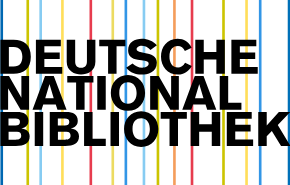ENHANCING THE TEACHING OF DESIGN IN ELECTRONIC EDUCATION SYSTEMS
DOI:
https://doi.org/10.55640/Keywords:
Electronic education, design teaching, e-learning systems, instructional design, interactive learning, learner engagement, digital pedagogy, design education, online feedback, educational technology.Abstract
The rapid development of electronic education systems has transformed the landscape of teaching and learning across various disciplines, including design education. However, design teaching possesses unique challenges due to its practical, creative, and iterative nature, which require specialized pedagogical and technological approaches. This article explores effective strategies for enhancing design instruction within electronic education platforms. It discusses the integration of interactive tools, continuous feedback mechanisms, interdisciplinary collaboration, and localized content to improve learner engagement and skill acquisition. The study also highlights the importance of soft skills development and mentorship in digital design education. Ultimately, the article emphasizes a holistic, learner-centered approach to optimizing design teaching in e-learning environments.
References
1. Laurillard, D. Teaching as a Design Science: Building Pedagogical Patterns for Learning and Technology. Routledge, London, 2012.
2. Tovey, M. Design Pedagogy: Developments in Art and Design Education. Gower Publishing, UK, 2015.
3. Chao, C. M. (2019). Factors determining the behavioral intention to use mobile learning: An application and extension of the UTAUT model. Frontiers in Psychology, 10, 1652. https://doi.org/10.3389/fpsyg.2019.01652
4. Brown, A., & Green, T. D. The Essentials of Instructional Design: Connecting Fundamental Principles with Process and Practice. Routledge, New York, 2020.
5. Eynon, R., & Malmberg, L. (2011). Lifelong learning and the internet: Who benefits most? British Journal of Educational Technology, 42(6), 936–949.
6. Simatele, M. (2022). Design education in the digital age: Reframing curriculum and pedagogy. International Journal of Art & Design Education, 41(1), 145–159.
7. Martin, F., & Bolliger, D. U. (2018). Engagement matters: Student perceptions on the importance of engagement strategies in the online learning environment. Online Learning Journal, 22(1), 205–222.
8. Adobe Creative Cloud. (2021). Teaching Design Online: Tools and Tips. Adobe Education Exchange. https://edex.adobe.com
9. Mishra, P., & Koehler, M. J. (2006). Technological Pedagogical Content Knowledge: A Framework for Teacher Knowledge. Teachers College Record, 108(6), 1017–1054.
10. Herrington, J., Reeves, T. C., & Oliver, R. Authentic Learning Environments in Higher Education. IGI Global, 2014.
11. Siemens, G. (2005). Connectivism: A Learning Theory for the Digital Age. International Journal of Instructional Technology and Distance Learning.
12. Puentedura, R. R. (2010). SAMR and TPCK: Intro to Advanced Practice. Hippasus.
Downloads
Published
Issue
Section
License

This work is licensed under a Creative Commons Attribution 4.0 International License.
Authors retain the copyright of their manuscripts, and all Open Access articles are disseminated under the terms of the Creative Commons Attribution License 4.0 (CC-BY), which licenses unrestricted use, distribution, and reproduction in any medium, provided that the original work is appropriately cited. The use of general descriptive names, trade names, trademarks, and so forth in this publication, even if not specifically identified, does not imply that these names are not protected by the relevant laws and regulations.







